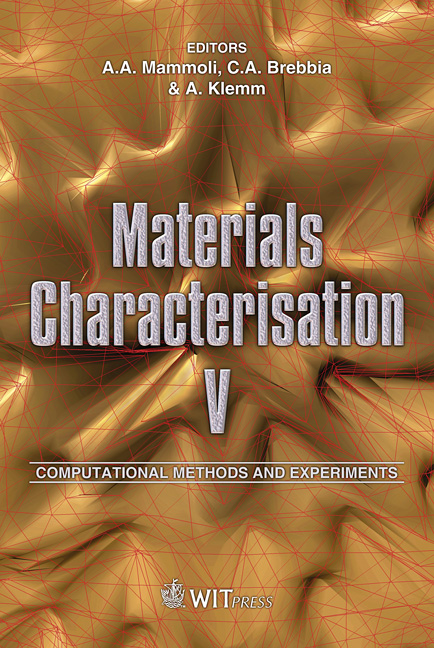Surface Characterization Of Eucalyptus And Ash Wood Veneers By XPS, TOF-SIMS, Optic Profilometry And Contact Angle Measurements
Price
Free (open access)
Transaction
Volume
72
Pages
12
Page Range
187 - 198
Published
2011
Size
604 kb
Paper DOI
10.2495/MC110171
Copyright
WIT Press
Author(s)
G. Vázquez, R. Ríos, M. S. Freire, G. Antorrena & J. González-Álvarez
Abstract
Composition and properties of the wood surface are very important in board manufacture as they determine wood-adhesive bonding and the quality of the final product. In this work two spectroscopic techniques, X-ray photoelectron spectrometry (XPS) and time of flight secondary ion mass spectrometry (TOF – SIMS), have been employed to study the surface composition of eucalyptus (Eucalyptus globulus) and ash (Fraxinus excelsior) sliced cut veneers. Both wood species are widely used for decorative veneers in the finishing of wood panels (particle boards, medium density fiber–boards, etc.). Further characterization of the wood surface was carried out by optic profilometry and wettability analysis, using the sessile drop method to measure contact angles. Wood is a very heterogeneous material and its composition can vary significantly depending on the sampling area; then, the influence of the radial position of the veneer in the trunk was also analyzed. From the low resolution XPS spectra the oxygen to carbon (O/C) ratio was calculated and, resolving the C1s signal, the percentages of the different carbon peaks corresponding to different functional groups (C1, C2, C3 and C4 carbons) were also calculated. The lower O/C ratio and the higher C1/C2 ratio for eucalyptus than for ash was attributed to the higher concentration of extractives on the eucalyptus wood surface that was confirmed by the TOF-SIMS spectra, which additionally revealed a patchy distribution of the extractives. The higher hydrophobicity of the eucalyptus wood surfaces was also supported by the results on the wetting properties of the veneers. Eucalyptus veneers exhibited a significantly higher constant wetting rate angle (cwra) and, consequently, a lower wettability than
Keywords
wood veneers, wettability, contact angles, XPS, TOF-SIMS, optic profilometry





